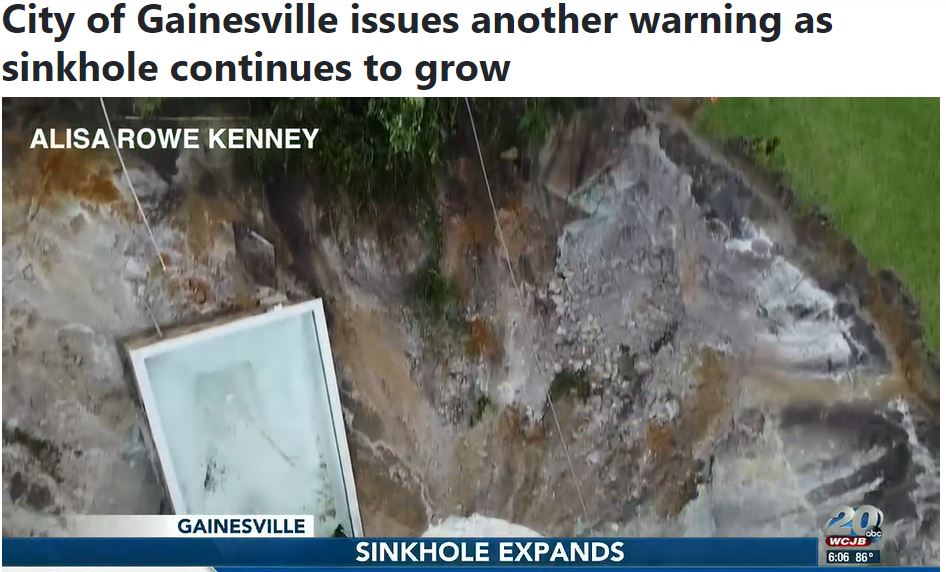
Rainfall percolating and seeping through soil absorbs carbon dioxide, increasing the acidity of groundwater. As water moves through bedding planes and other spaces and cracks, it dissolves limestone and creates a network of cavities and voids. Over millions of years, pores and cracks are enlarged. Sinkholes form when the land surface above collapses or sinks into these cavities or voids.
Drought, along with resulting high groundwater withdrawals, can promote sinkhole formation. Excess rainfall can also promote sinkhole formation because heavy, saturated soil is more likely to collapse due to its weight. Sinkholes can be triggered by human activities such as withdrawal of groundwater, well drilling, and pond construction. In urban or suburban areas, sinkholes can destroy buildings and highways and cause water quality problems when surface waters leak into the aquifer following the sinkhole collapse.
The sinkhole that began developing in October 2020 threatens several homes in NW Gainesville and is of great concern to one of our faculty members Dr. Tim Fik, who lives nearby.
You can learn more about sinkholes in Florida at the State of Florida’s Subsidence Incident Reports Map.